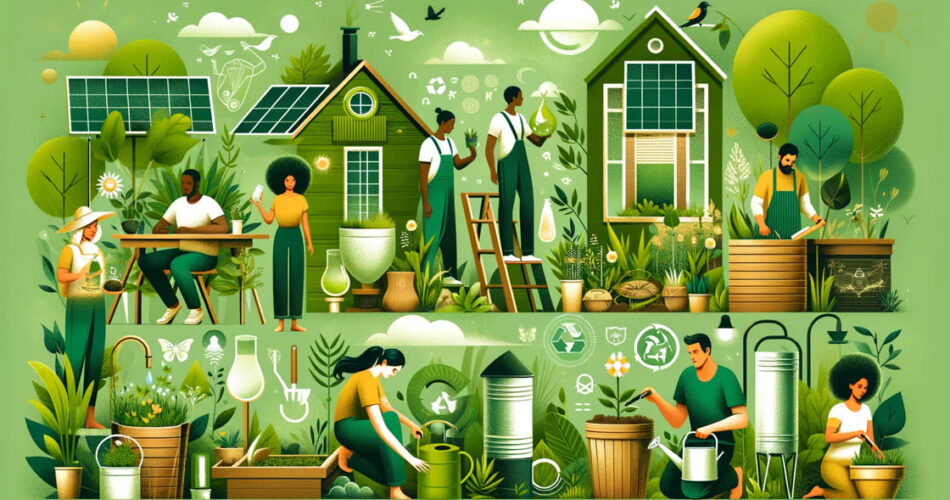Moving to a house with a garden presents a wonderful opportunity to create an eco-friendly outdoor space. An environmentally sustainable garden not only contributes to the health of the planet but also creates a natural and serene environment for you to enjoy. Here’s how you can develop an eco-friendly garden in your new home, combining aesthetic appeal with environmental consciousness.
Choosing the Right Plants
Native Planting: Opt for native plants as they are adapted to the local climate and soil conditions, require less water, and provide a natural habitat for local wildlife.
Drought-Resistant Varieties: Consider drought-resistant plants if you live in an area with water scarcity. These plants require less watering and maintenance.
Promoting Biodiversity
Attracting Wildlife: Create a habitat for birds, bees, and butterflies by planting a variety of flowering plants and shrubs. Consider installing bird feeders or a bird bath.
Planting for Pollinators: Include plants that attract pollinators such as bees and butterflies. Pollinators are essential for a healthy ecosystem.

Water Conservation
Rainwater Harvesting: Install a rainwater harvesting system to collect rainwater for garden use. This reduces the need for tap water and is better for your plants.
Efficient Watering: Use watering methods that reduce waste, such as drip irrigation or soaker hoses, which deliver water directly to the plant roots.
Organic Gardening
Avoiding Chemicals: Refrain from using chemical pesticides and fertilizers. Instead, opt for organic alternatives that are less harmful to the environment.
Composting: Set up a compost bin to recycle kitchen and garden waste into nutrient-rich compost for your garden.
Sustainable Landscaping
Permeable Paving: Use permeable materials for paths and patios to allow rainwater to soak into the ground and reduce runoff.
Lawn Alternatives: Consider alternatives to traditional lawns, such as clover, ground covers, or a wildflower meadow, which require less water and maintenance.

Energy-Efficient Garden Features
Solar-Powered Lights: Use solar-powered lights for your garden to reduce electricity consumption.
Eco-Friendly Garden Structures: When building decks, fences, or sheds, use sustainably sourced or recycled materials.
In conclusion, creating an eco-friendly garden involves choosing the right plants, promoting biodiversity, conserving water, practicing organic gardening, implementing sustainable landscaping, and using energy-efficient garden features. By adopting these practices, you can create a beautiful garden that not only benefits the environment but also provides a peaceful and natural space for you and your family. Remember, every small step towards eco-friendly gardening contributes to a healthier and more sustainable environment.
